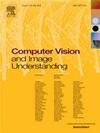Guided image filtering-conventional to deep models: A review and evaluation study
IF 4.3
3区 计算机科学
Q2 COMPUTER SCIENCE, ARTIFICIAL INTELLIGENCE
引用次数: 0
Abstract
In the past decade, guided image filtering (GIF) has emerged as a successful edge-preserving smoothing technique designed to remove noise while retaining important edges and structures in images. By leveraging a well-aligned guidance image as the prior, GIF has become a valuable tool in various visual applications, offering a balance between edge preservation and computational efficiency. Despite the significant advancements and the development of numerous GIF variants, there has been limited effort to systematically review and evaluate the diverse methods within this research community. To address this gap, this paper offers a comprehensive survey of existing GIF variants, covering both conventional and deep learning-based models. Specifically, we begin by introducing the basic formulation of GIF and its fast implementations. Next, we categorize the GIF follow-up methods into three main categories: local methods, global methods and deep learning-based methods. Within each category, we provide a new sub-taxonomy to better illustrate the motivations behind their design, as well as their contributions and limitations. We then conduct experiments to compare the performance of representative methods, with an analysis of qualitative and quantitative results that reveals several insights into the current state of this research area. Finally, we discuss unresolved issues in the field of GIF and highlight some open problems for further research.
求助全文
约1分钟内获得全文
求助全文
来源期刊

Computer Vision and Image Understanding
工程技术-工程:电子与电气
CiteScore
7.80
自引率
4.40%
发文量
112
审稿时长
79 days
期刊介绍:
The central focus of this journal is the computer analysis of pictorial information. Computer Vision and Image Understanding publishes papers covering all aspects of image analysis from the low-level, iconic processes of early vision to the high-level, symbolic processes of recognition and interpretation. A wide range of topics in the image understanding area is covered, including papers offering insights that differ from predominant views.
Research Areas Include:
• Theory
• Early vision
• Data structures and representations
• Shape
• Range
• Motion
• Matching and recognition
• Architecture and languages
• Vision systems
 求助内容:
求助内容: 应助结果提醒方式:
应助结果提醒方式:


